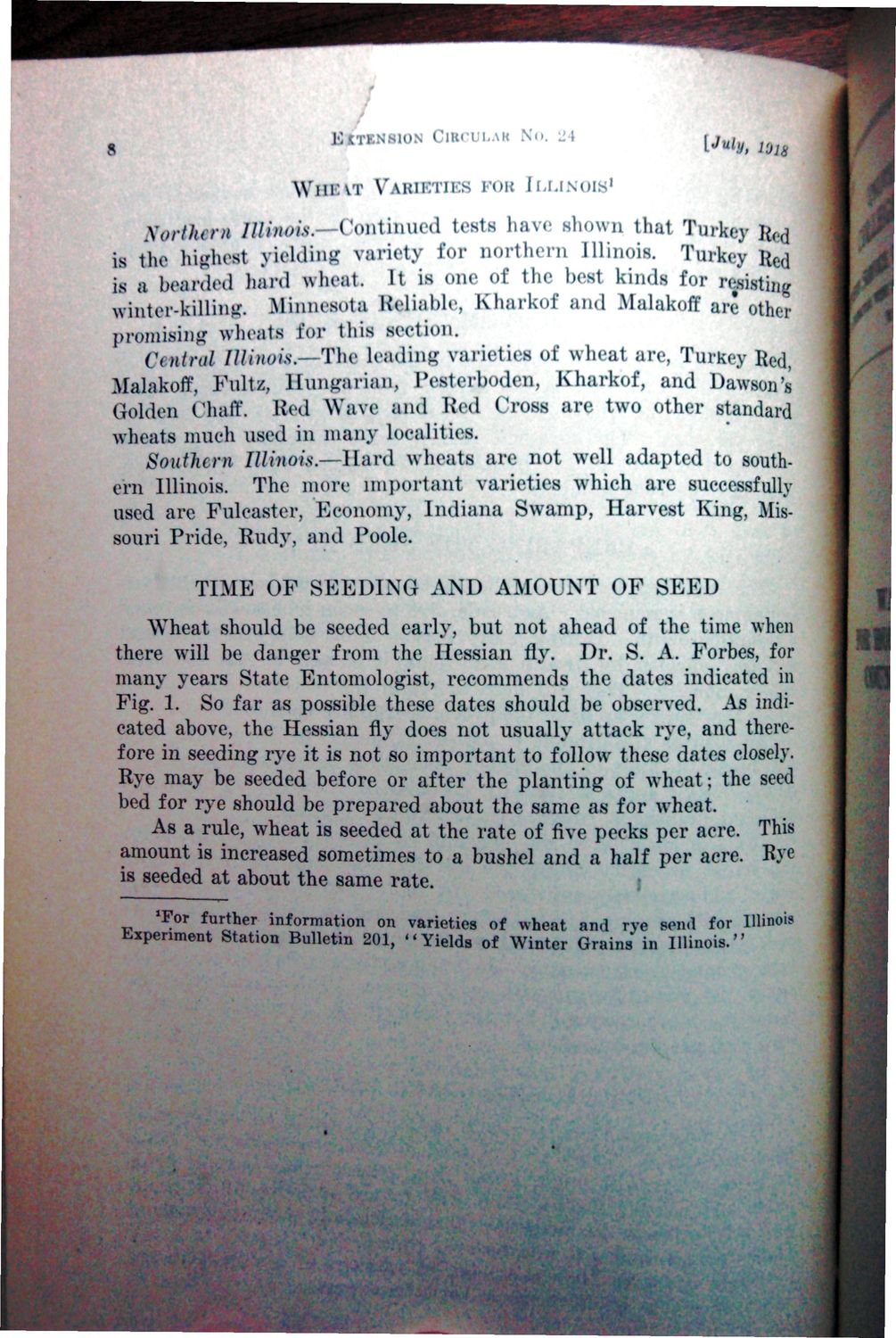| |
| |
Caption: War Publications - WWI Compilation 1923 - Article 30
This is a reduced-resolution page image for fast online browsing.

EXTRACTED TEXT FROM PAGE:
INTENSION CIRCULAR NO. 24 yu(i^ 1 WHEW VARIETIES FOR ILLINOIS tests have shown that Turkey ]{(.ri van I urkey Bed is a bearded hard wheat. It is one of the best kinds for n;sistinjr winter-killing liiniu'suta Keliable, Kharkof and Malakoff are other promising wheats for this section. Central Illinois.— The leading varieties of wheat are, Turkey Red, Malakoff, Fultz, Hungarian, Pesterboden, Kharkof, and Dawson's Golden Chaff. Bed Wave and Red Cross are two other standard wheats much used in many localities. Southern Illinois.—-Hard wheats arc not well adapted to southern Illinois. The more important varieties which are successfully used are Fuleaster, Economy, Indiana Swamp, Harvest King, Missouri Pride, Rudy, and Poole. TIME OF SEEDING AND AMOUNT OF SEED Wheat should be seeded earlv, but not ahead of the time when there will be danger from the Hessian fly. Dr. S. A. Forbes, for many years State Entomologist, recommends the dates indicated in Fig. 1. So far as possible these dates should be observed. As indicated above, the Hessian fly does not usually attack rye, and therefore in seeding rye it is not so important to follow these dates closely. Rye may be seeded before or after the planting of wheat; the seed bed for rye should be prepared about the same as for wheat. As a rule, wheat is seeded at the rate of five peeks per acre. This amount is increased sometimes to a bushel and a half per acre. Rye is seeded at about the same rate. "For further information on varieties of wheat and rye send for Illinois Experiment Station Bulletin 201, "Yields of Winter Grains in Illinois." Xorthern Illinois.**Continued
| |